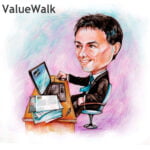The behavioural biases hold the capability to make the most rational person irrational. They make a person take illogical decisions and suffer the consequences. At times, the individuals fixate on the wrong issues due to their behavioural biases, and lose track of the right path.
Q2 hedge fund letters, conference, scoops etc
For the people dealing in finance and investments, these biases not only make them make incorrect professional decisions, but can also make them suffer huge financial losses, due to the faulty and bias-clad judgements.
In the series of exploring the behavioural biases, another significantly detrimental bias is Overconfidence.
Overconfidence Bias
Overconfidence bias means that the individual is outrightly confident of his decisions and he overestimates or exaggerates his ability to perform a task. While confidence is good and necessary, the thin line between confidence and overconfidence is what demarcates right and wrong. The difference is quite subtle and difficult to analyse, but causes a monumental effect in terms of outcomes.
Conceptually, overconfidence bias is the exact opposite of the status quo bias discussed earlier. Status quo is being under confident in one’s capabilities, while overconfident depicts overestimation. The individuals with status quo bias tend to remain where they were and are averse to experimentation, whereas the ones with overconfidence move too quickly and highly risk-prone.
The investors with overconfidence bias override models and data because they convince themselves that they know better. They may not always know better, and by ignoring the early signs of potential damage, they cause themselves more harm than good.
Causes of Overconfidence Bias
Overconfidence is generally caused by alarmingly high levels of optimism. Optimism is good, but after a certain extent, it can cause harms and losses in investing. The investor becomes unable to see the potential dangers of his actions and ends up making rash decisions, that can cost him a fortune.
It is also correlated to certain other behavioural biases. Like the self-serving bias, in which the individuals tend to attribute success to their own skills and failures to the external environment. This causes high levels of overconfidence bias in own skills. Overconfidence can also be caused by superiority or above-average effect. In this case, too, the individuals overestimate their capabilities.
In the world of investing, overconfidence can also be caused by the extrapolation effect. The investors tend to remember their recent gains and forget the losses. This makes them extrapolate their own performance and be overconfident of their skills.
Effects of Overconfidence Bias
As a result of the overconfidence bias, the investors tend to be more active traders than required. They overestimate their abilities to value companies, predict movements and growth and move in and out of positions quite rashly and very frequently.
Overconfidence traps the investors in a vicious circle wherein they buy when they are confident, sell when they are afraid, completely miss the recovery part and jump back into the cycle as soon as possible. This makes them more risk-prone and also mitigates their gains.
The overconfident investors underestimate the risks, overestimate the rewards and trade excessively. The overall effect is a poorly diversified portfolio, with lower returns than those of the market, on an average. Research has proved that higher levels of trading are linked to lower returns.
How to Overcome Overconfidence Bias?
Confidence is not bad. In fact, it is a prerequisite for being a good investor. The investor can never take the courage to make decisions about buying, selling and holding without the optimum levels of confidence. However, when the confidence exceeds to the level of overconfidence, the real problem begins. It becomes critical to overcome overconfidence bias.
The first step to avoid overconfidence is to remember that financial markets are highly dynamic. Even the seasoned traders and fund managers, with access to the best reports and models, do not perform the best at all times. Therefore, it is very important to remain grounded and realistic.
Another effective way to overcome overconfidence is by critically analysing one’s performance at regular intervals. The investor must look back at his losses and the mistakes he committed. This will help him remind himself that he does not know everything and even he can be wrong at times. The investor must also weigh the consequences of being wrong, in terms of his personal finances, life goals and professional goals. Keeping and looking back at the list of failures is equally important as the list of gains.
The investors must make all efforts to stay away from self-delusion, and assuming that he knows the best. Instead of being strong-headed that a loss will be reversed and the market will come to the place they envisioned, the investors must learn to accept the mistakes and move on.
As a bottom line, a level-headed investor must know how to recognise the signs of overconfidence and know when and how to apply the brakes. It is never too late!












